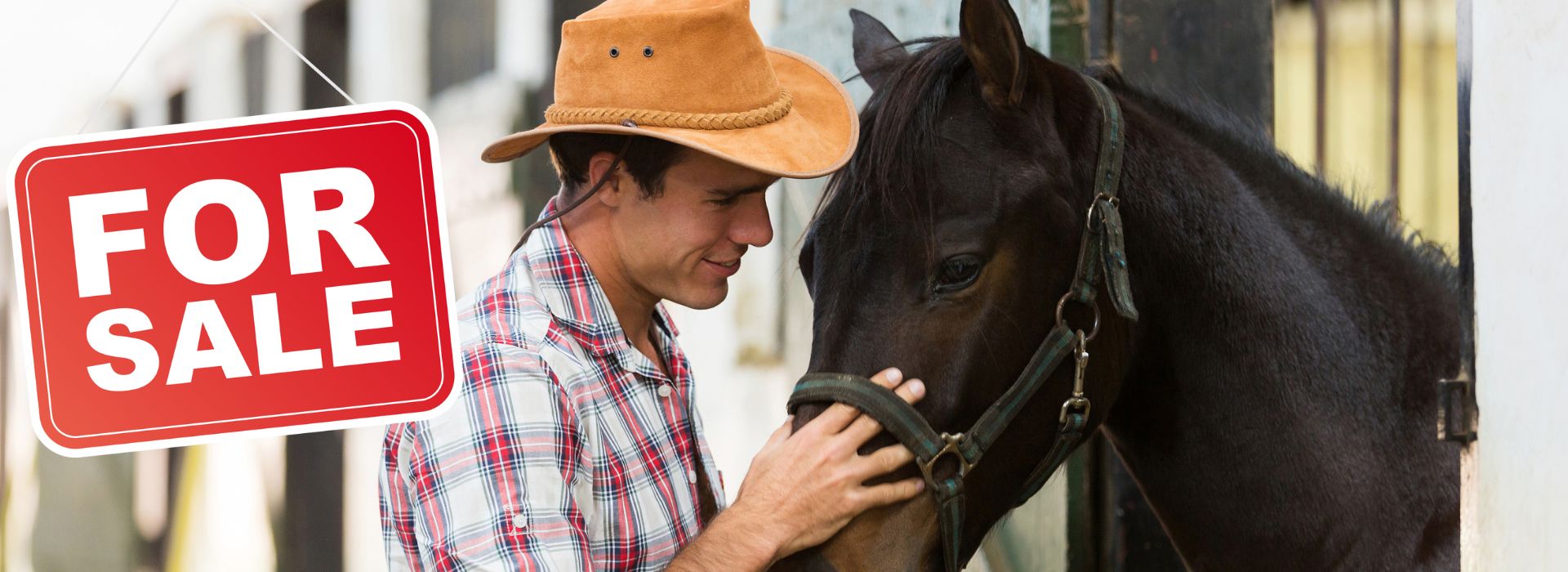What Buyers Look for in a Horse for Sale Ad: Tips to Attract Serious Interest

If you’re trying to sell your horse, the first impression isn’t made in person—it’s made in the ad. And let’s be real, buyers are scrolling fast. That means your ad has to do a lot in a little time. So, what actually makes someone stop and click? What makes them send a message? Let’s break down exactly what buyers are looking for in a horse for sale ad.
1. Clear, Honest Photos
Photos are the first thing people notice. They want to see the whole horse—conformation, movement, eyes, and hooves. Clean the horse, use natural light, and avoid busy backgrounds. Post 4–6 photos minimum.
- A full-body shot from both sides
- A front and rear view
- At least one showing the horse under saddle or in motion
Don’t use filters. Buyers are sharp—they’ll spot them.
2. A Descriptive, Straightforward Title
A vague title like “Nice Gelding for Sale” doesn’t cut it. Try: “2015 AQHA Palomino Gelding – Trail Safe & Beginner Friendly.”
Buyers want to know: breed, age, sex, and one highlight feature—right in the title.
3. The Horse’s Details—Not Just the Fluff
Buyers are cautious. They’ve seen the vague fluff before. Instead, they want the basics:
- Age
- Height
- Breed
- Registration (if any)
- Discipline trained in
- Level of rider suited for
- Health condition
The more specifics, the more confidence the buyer will have. If your horse is suitable for beginners, say it. If it needs an experienced rider, say that too.
👉 If budget is a concern for your buyer, link them to our helpful article: 7 Most Affordable Horse Breeds for Beginners.
4. Temperament and Training Level
Is the horse calm or spicy? Has it been trailered? How does it handle new environments? Buyers want to picture this horse in their life. A sentence or two that captures the horse’s vibe goes a long way.
Not sure how to describe temperament? Take a look at this temperament guide to get clear on how to communicate your horse’s personality in the ad.
Example: “Willow is a sweet-natured mare who stands quietly for the farrier and trailers like a dream. She’s confident out on trails and not spooky.”
5. Soundness, Health, and History
Buyers want transparency. If the horse has old injuries, say so. If it’s 100% sound, brag a little—but back it up with recent vet work if you can. Dental, hoof, or Coggins records help buyers feel confident.
If they’re not sure whether ownership is the right step, suggest they consider leasing as a low-pressure first step. Here’s a great resource: Leasing A Horse: Pros and Cons.
6. Video Links
We can’t stress this enough—add a video. A short, 1–2 minute clip showing:
- The horse walking/trotting/cantering
- Ground manners
- Mounting and riding
Upload it to YouTube or Vimeo and include the link in your ad. Most buyers won’t reach out until they see video proof of what you’re describing.
7. Location, Contact Info, and Price
Don’t leave these out! Buyers want to know:
- Where the horse is located
- How to contact you (phone/email)
- The asking price (or “firm,” “negotiable,” “best offer”)
Not including a price is one of the fastest ways to get skipped over.
8. A Sense of Urgency (Without the Pressure)
If the horse needs to be sold quickly, mention that. But keep it professional. Phrases like “motivated seller” or “priced to sell due to no fault of the horse” help signal urgency without sounding desperate.
Final Thought
Selling a horse is about creating trust. Buyers want to feel like they’re getting the full story upfront, not having to pull teeth to get details. A good horse ad is honest, clear, and complete—and it shows your horse in the best light, without trying to hide flaws.
The right buyer is out there. Help them find you by writing the kind of ad you’d want to see if you were the one shopping.
How To Sell Your Horse Fast
Do you want to sell your horse fast? We've put together a guide to help you understand your options and walk you step by step through the process.




